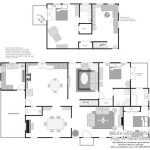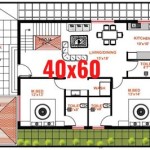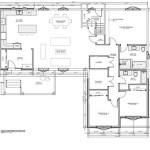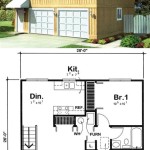Real Estate Floor Plan Drawings
Floor plans are essential tools for real estate professionals and homebuyers alike. They provide a detailed layout of a property, including the location of rooms, walls, windows, and doors. This information can be invaluable when making decisions about a potential purchase or rental.
There are two main types of floor plans: measured floor plans and schematic floor plans. Measured floor plans are created by measuring the actual dimensions of a property, while schematic floor plans are created based on the architect's drawings. Both types of floor plans can be useful, but measured floor plans are generally more accurate and detailed.
Floor plans can be used for a variety of purposes, including:
- Visualizing a property: Floor plans can help you get a sense of the layout and flow of a property. This can be helpful when you're trying to decide if a property is right for you.
- Planning renovations: If you're planning to renovate a property, floor plans can help you visualize the changes you want to make. This can help you avoid costly mistakes.
- Marketing a property: Floor plans are a great marketing tool for real estate professionals. They can help potential buyers visualize the property and understand its layout.
If you're considering buying or renting a property, it's important to obtain a floor plan. Floor plans can provide you with valuable information that can help you make an informed decision.
How to Read a Floor Plan
Floor plans can be daunting at first, but they're actually quite easy to read. Here are a few tips:
- Start by identifying the main rooms. The most important rooms in a house are usually the living room, dining room, kitchen, and bedrooms. These rooms will be easy to identify on a floor plan.
- Pay attention to the scale. Floor plans are typically drawn to scale, which means that the dimensions of the rooms are accurate. This can be helpful when you're trying to get a sense of the size of a property.
- Look for symbols. Floor plans often use symbols to represent different features. For example, a circle may represent a window, and a square may represent a door.
- Don't be afraid to ask questions. If you're having trouble understanding a floor plan, don't hesitate to ask your real estate agent or the architect for help.
With a little practice, you'll be able to read floor plans like a pro. This can be a valuable skill for anyone who is interested in real estate.
Software for Creating Floor Plans
If you need to create a floor plan, there are a number of software programs available that can help. These programs can be used to create both measured floor plans and schematic floor plans. Some of the most popular floor plan software programs include:
- AutoCAD: AutoCAD is a professional-grade floor plan software program that is used by architects and engineers. It is a powerful program that can be used to create detailed and accurate floor plans.
- SketchUp: SketchUp is a user-friendly floor plan software program that is perfect for beginners. It is a great program for creating simple and easy-to-understand floor plans.
- Floorplanner: Floorplanner is an online floor plan software program that is perfect for creating quick and easy floor plans. It is a great program for anyone who needs to create a floor plan for a personal project.
No matter what your needs are, there is a floor plan software program that can help you create the perfect floor plan.

Create Professional Real Estate Floor Plans

Create Professional Real Estate Floor Plans

Create Professional Real Estate Floor Plans

The Ultimate Guide To Real Estate Floor Plans Ddreps

Real Estate Floor Plans Open2view Queensland

Floor Plans For Melbourne Real Estate Marketing Maison Snap
Real Estate Floor Plans And Site Photographer

Create Professional Real Estate Floor Plans

Marketing Real Estate 2d Or 3d Floor Plans Elevations Service

Create Professional Real Estate Floor Plans








